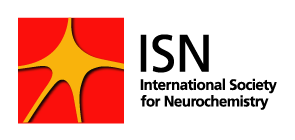Many people think this is easy as it is meant to be short and you just repeat things you are going to tell later anyway. That is a pitfall. The abstract is the first, and in the worst case, the only piece of your work that many other scientists will read. Therefore you want it to be:
- Eye-catching: get people interested in your work!
- Short (half a page max): Short texts are more appealing; a long abstract may put many potential readers off immediately.
- Informative: Give the essence of what you found out, meaning the key question behind your study and what your results show to answer it. People should be able to tell in short words what your work is about after reading your abstract.
- Logical: As mentioned above, the abstract is meant to guide readers through your story in a few sentences. Thus, start by offering readers basic information that is essential to understanding the question you are studying. Then, clearly state the problem you are addressing and describe your approach to tackle this problem. Finally, you can describe your results and conclusions.
- Clear and straightforward: Too many details and long explanations can confuse people who are not familiar with the topic. People who don’t understand the bottom line of your work from reading your abstract are unlikely to get really interested in the rest of the story.
- Thought provoking: The last sentence of your abstracts could be used to put your work into a bigger picture – i.e., how your findings contribute to solving a broader question or problem (new biological insights, disease mechanisms, etc). This is a take-home message and will give readers a chance to relate your work to their own.
The hardest part is to put all of this in short words. One approach could be to write a longer version at the beginning, as it is sometimes easier to trim things out, than to keep it shorter from the start. Some people also start by writing take-home messages to the figures and build their abstract from those sentences.
One of the most important points is to have colleagues, ideally also those who are not familiar with your work, to proofread your abstract, especially focussing on clarity and also formal errors (typos, etc.). Formalities differ depending on the purpose of your abstracts (poster, paper, grant or thesis). Make sure you are aware of word (or character!) limits, regulations on the use of abbreviations or format ( structured or unstructured format requirements) before you start writing!
You will find this piece of information in the author instructions for others of the journal, on the conference homepage or in your departmental regulations. If there is no information given, do not hesitate to ask. It would be a shame if your work cannot be accepted because of formal issues. You have worked too hard to allow this to happen!
A good, interesting and catchy abstract can pave your way to recognition, publishing, presenting your work and even to receive funding. It is not the easiest part of your work, but one of the most powerful, so it is worth the effort!
If you have any particular questions or would like to talk about this topic in more detail, please get in touch (yssc@neurochemistry.org).
From the YSSC
